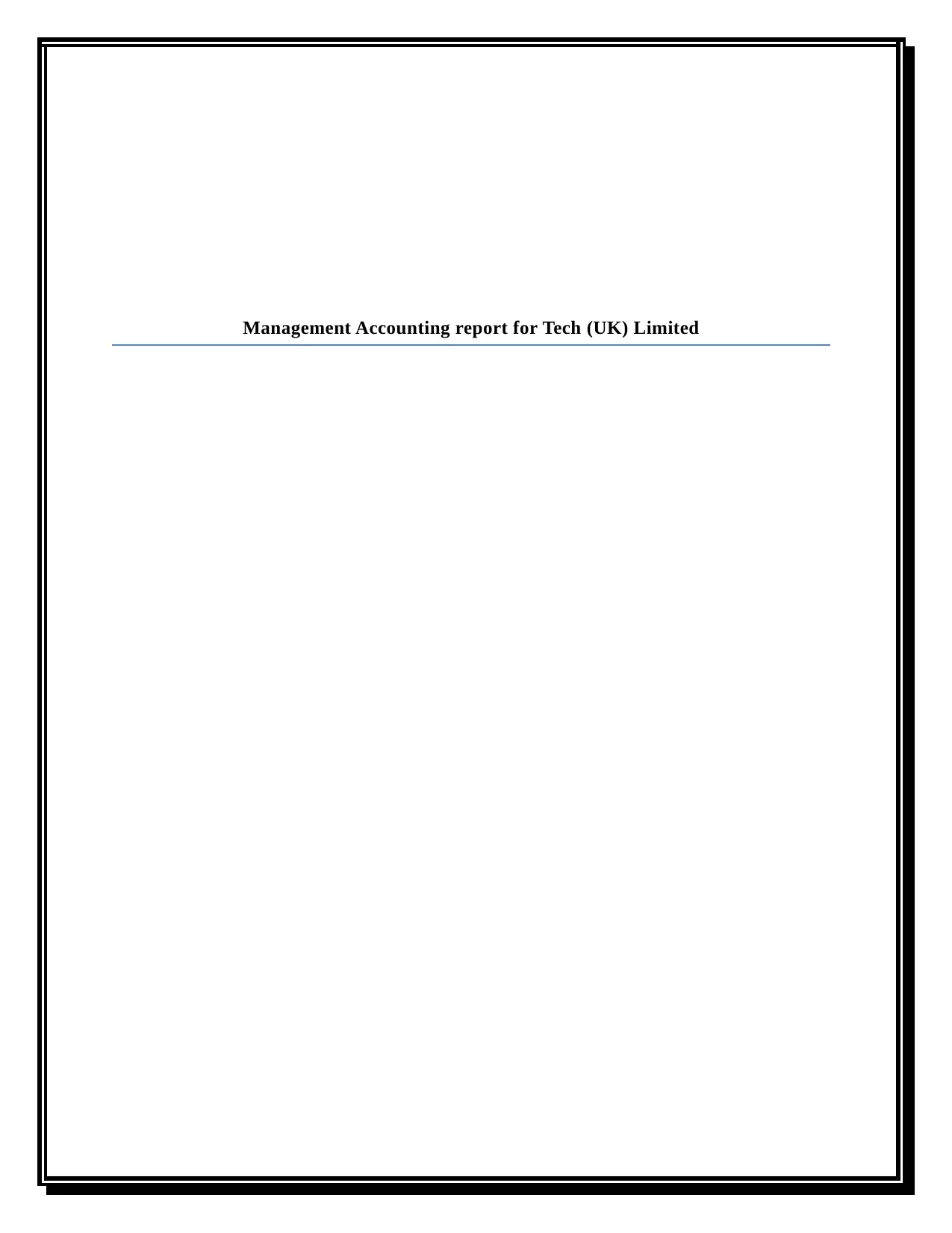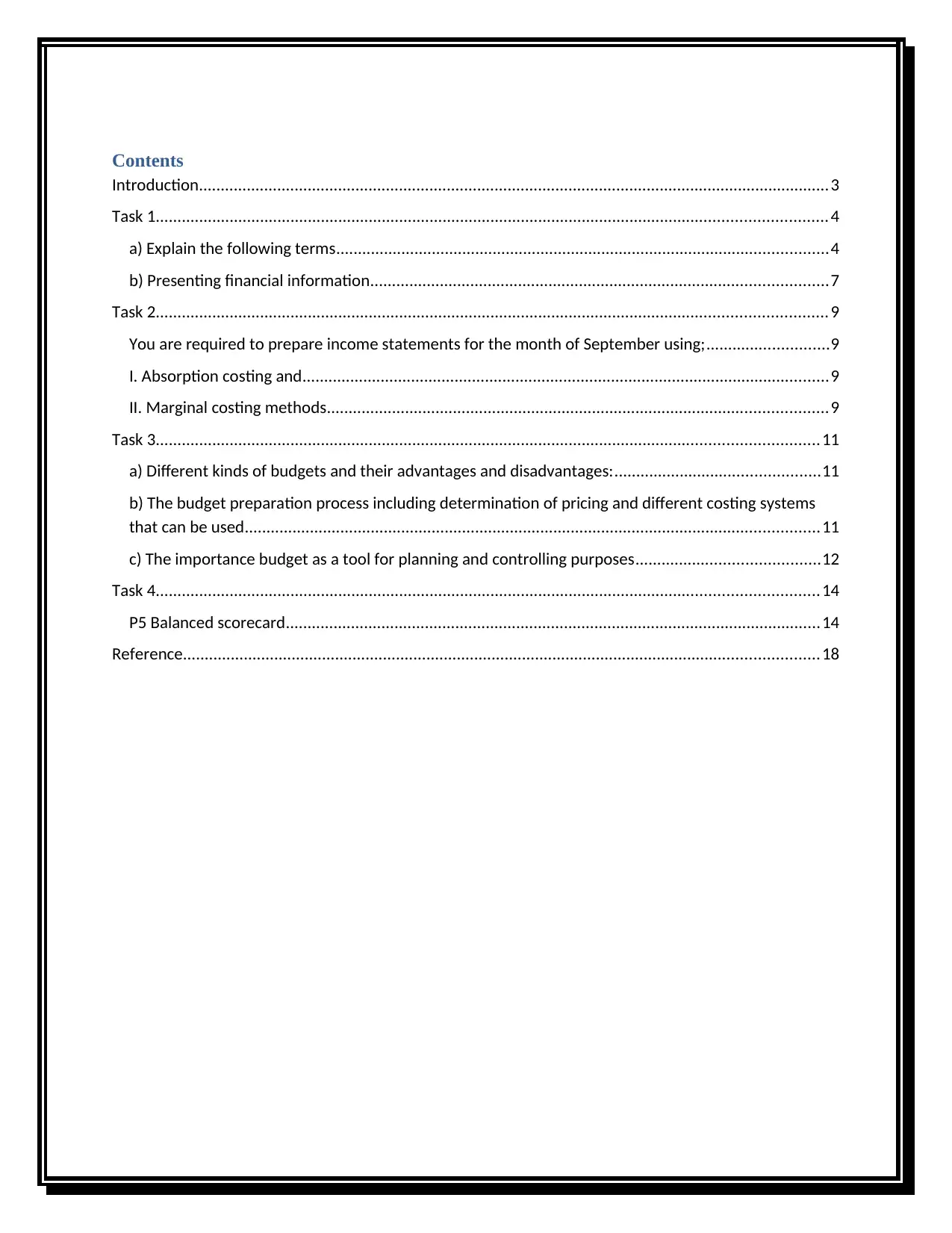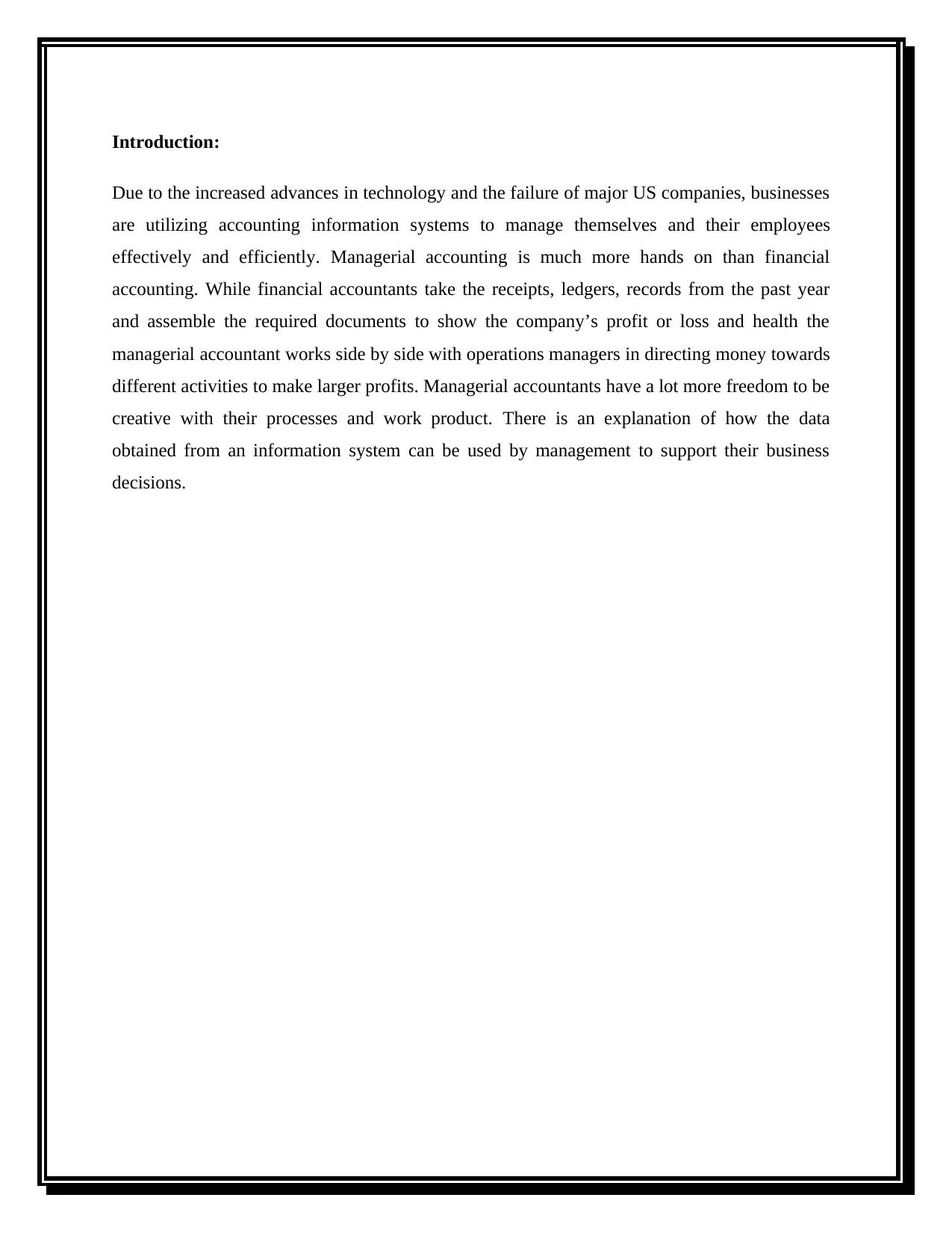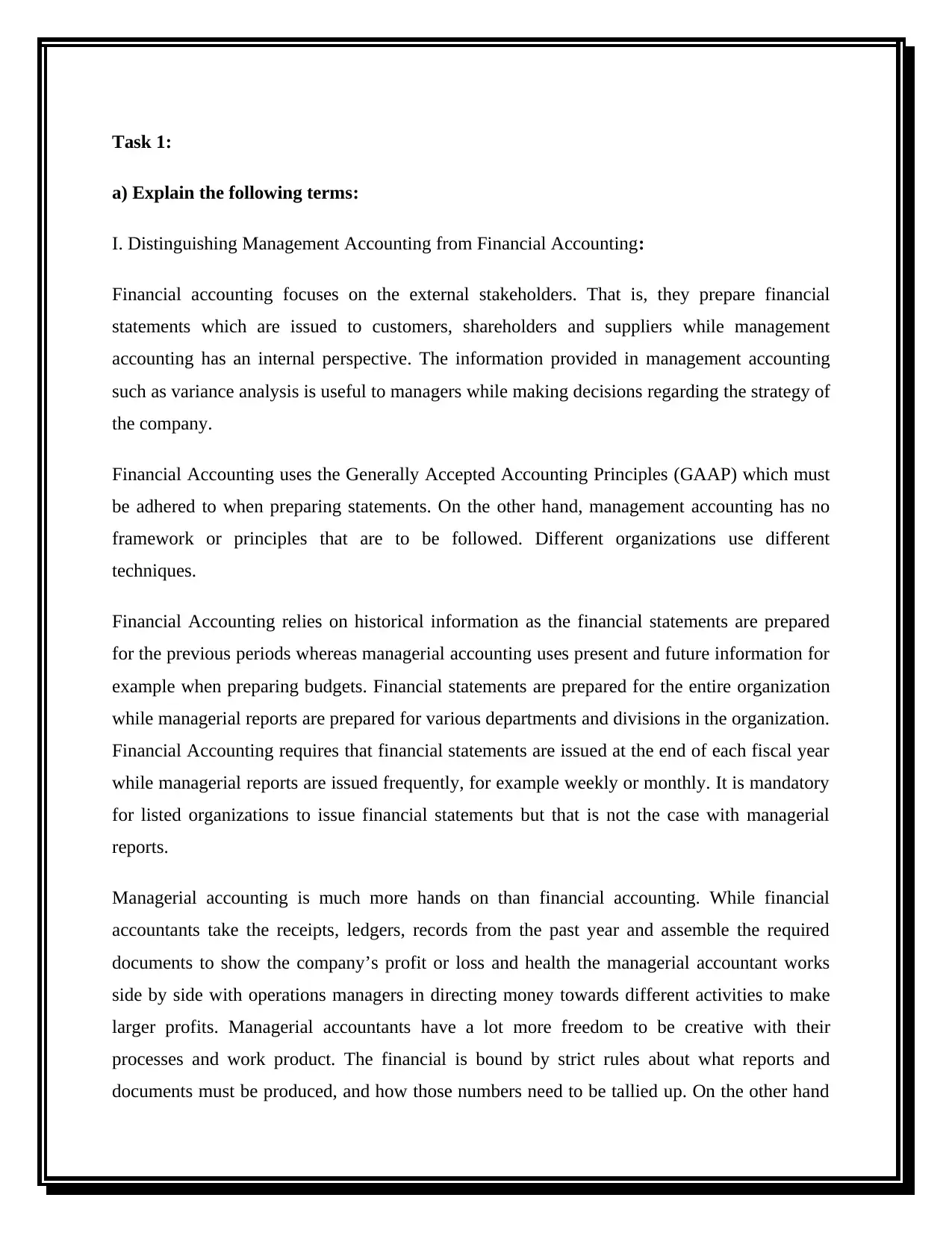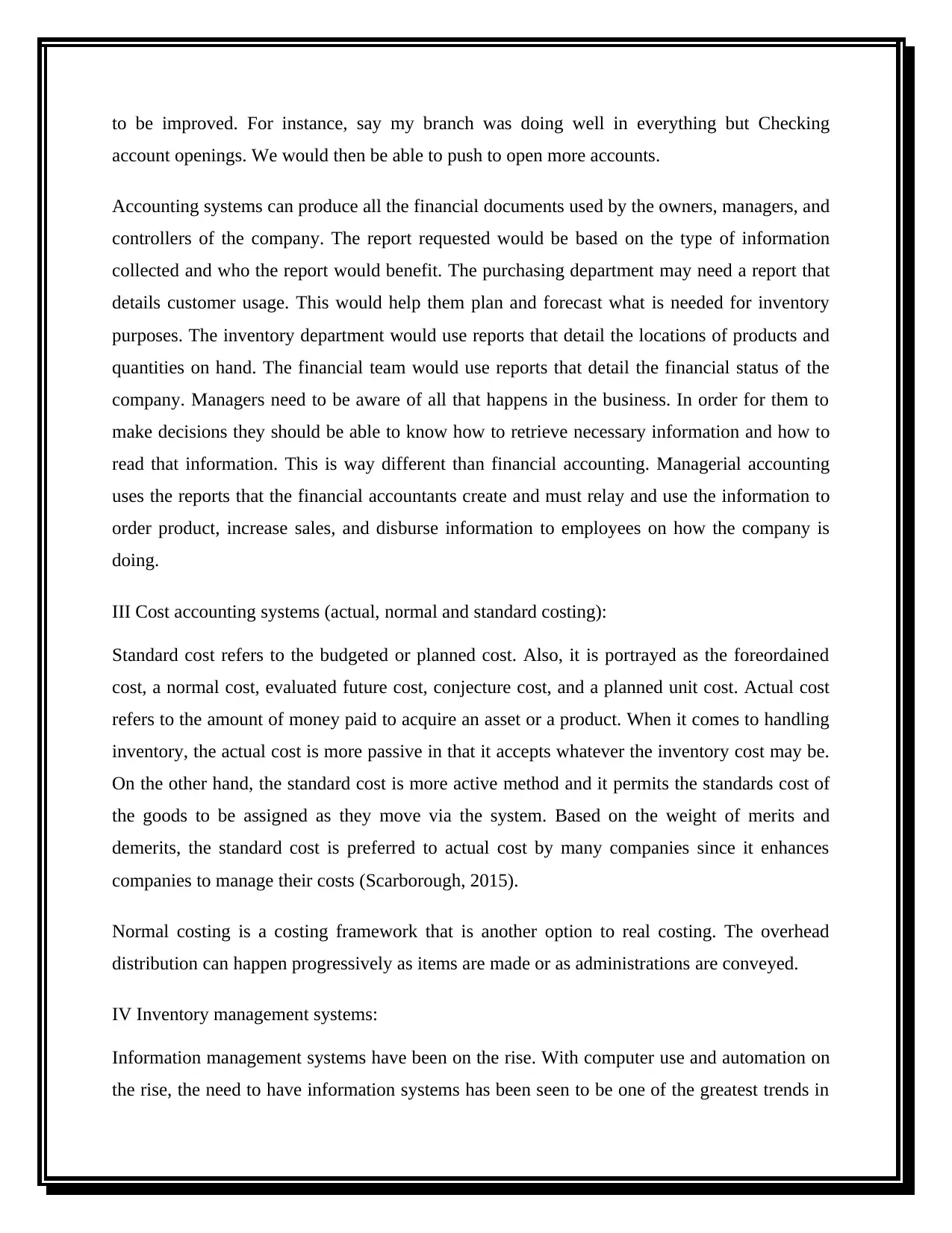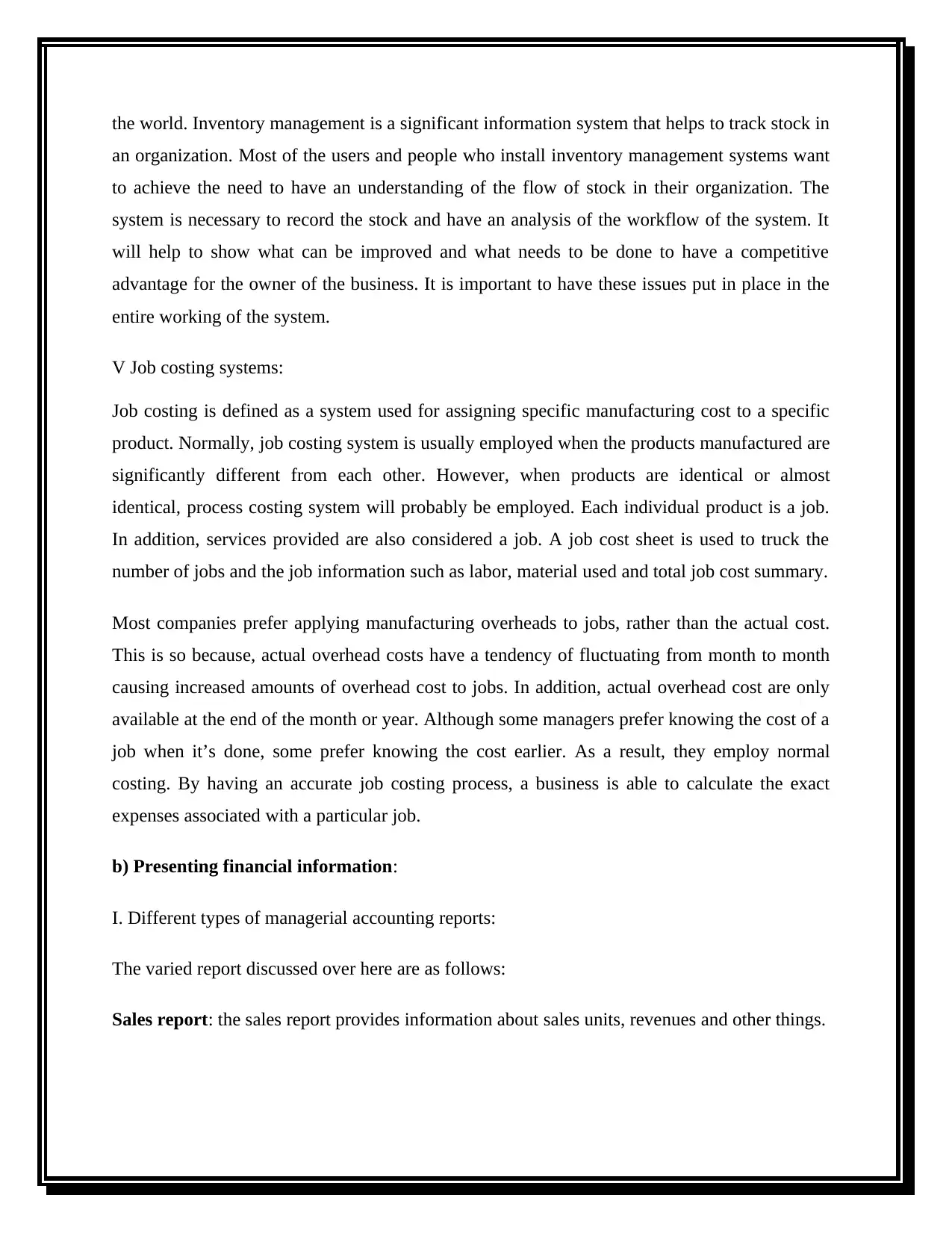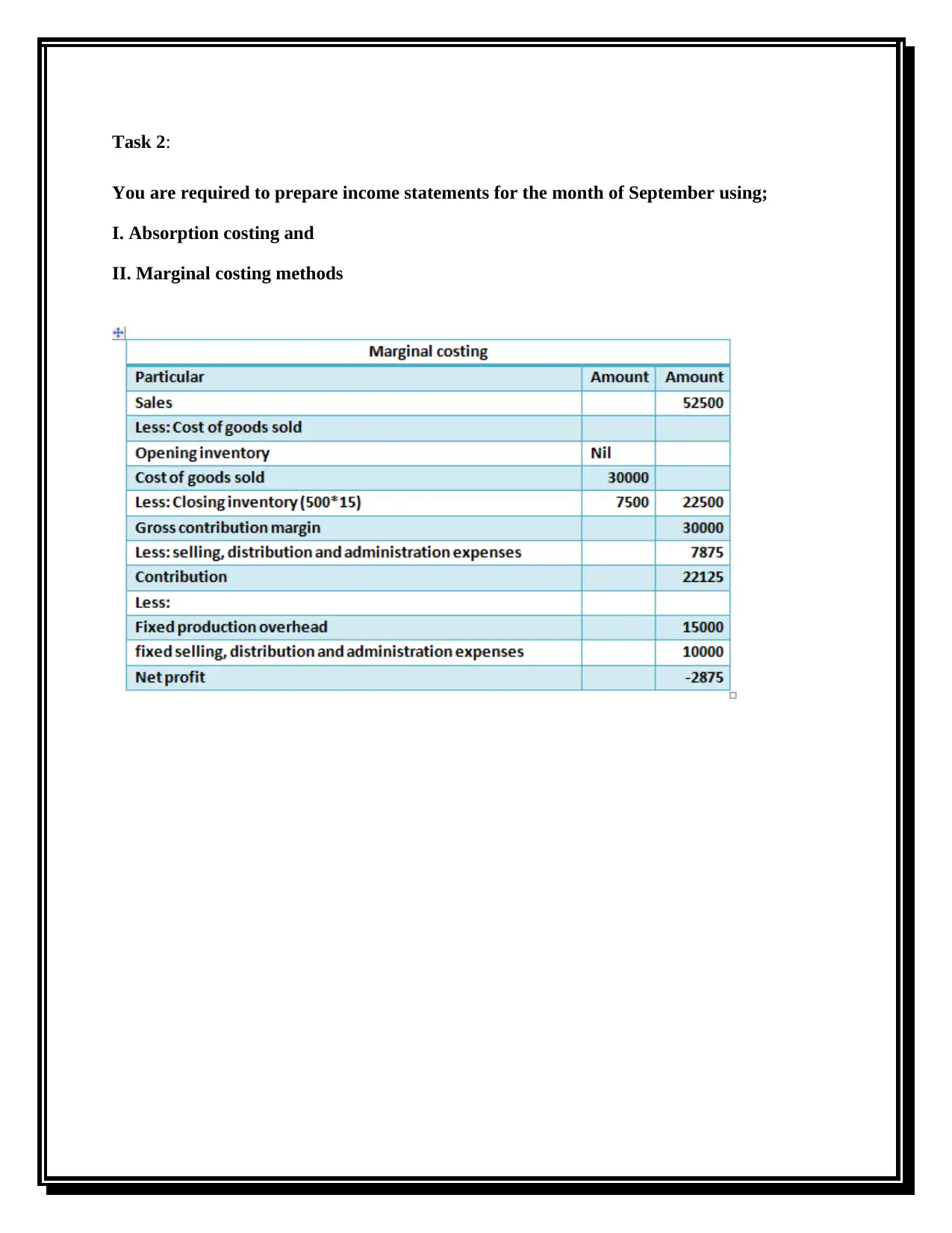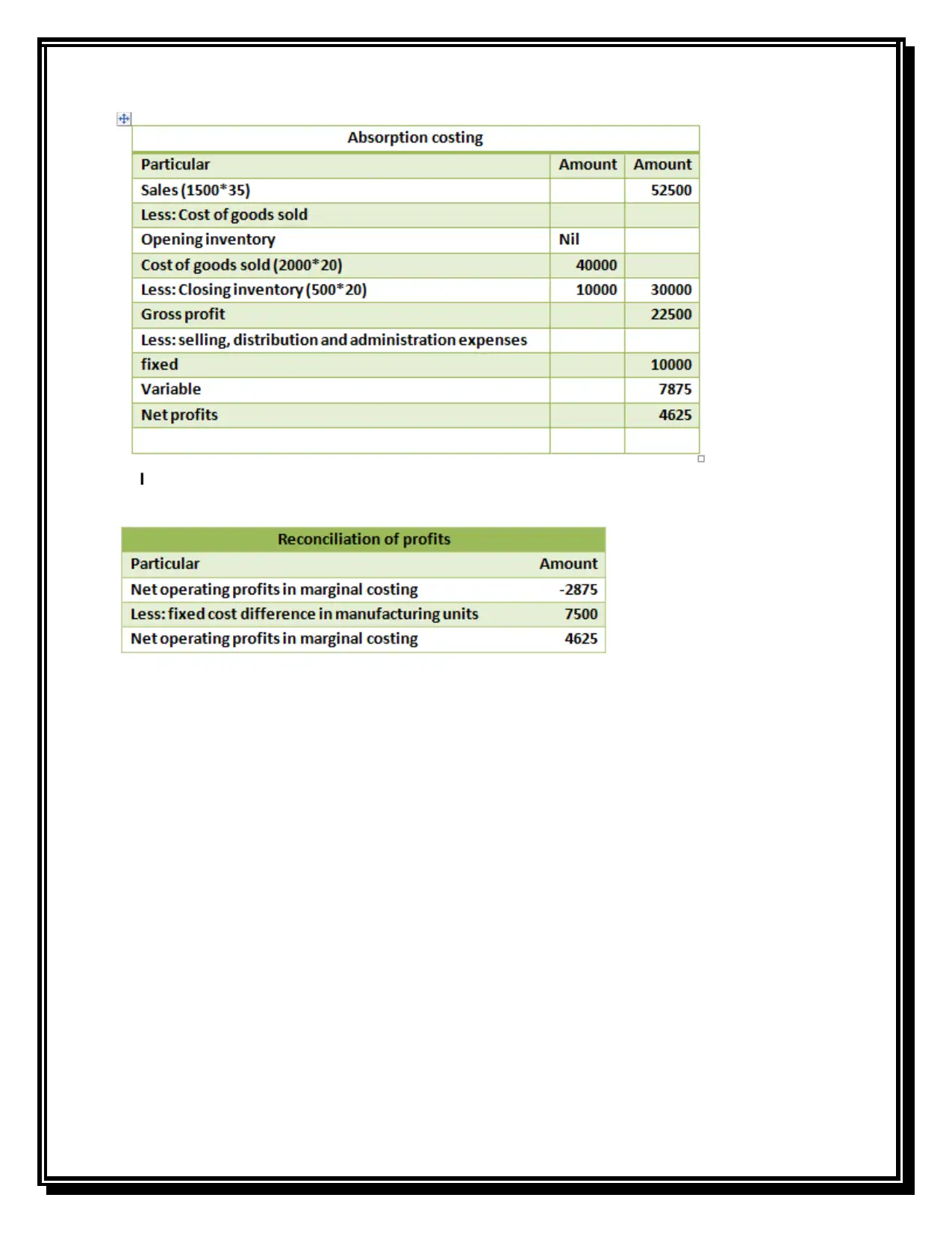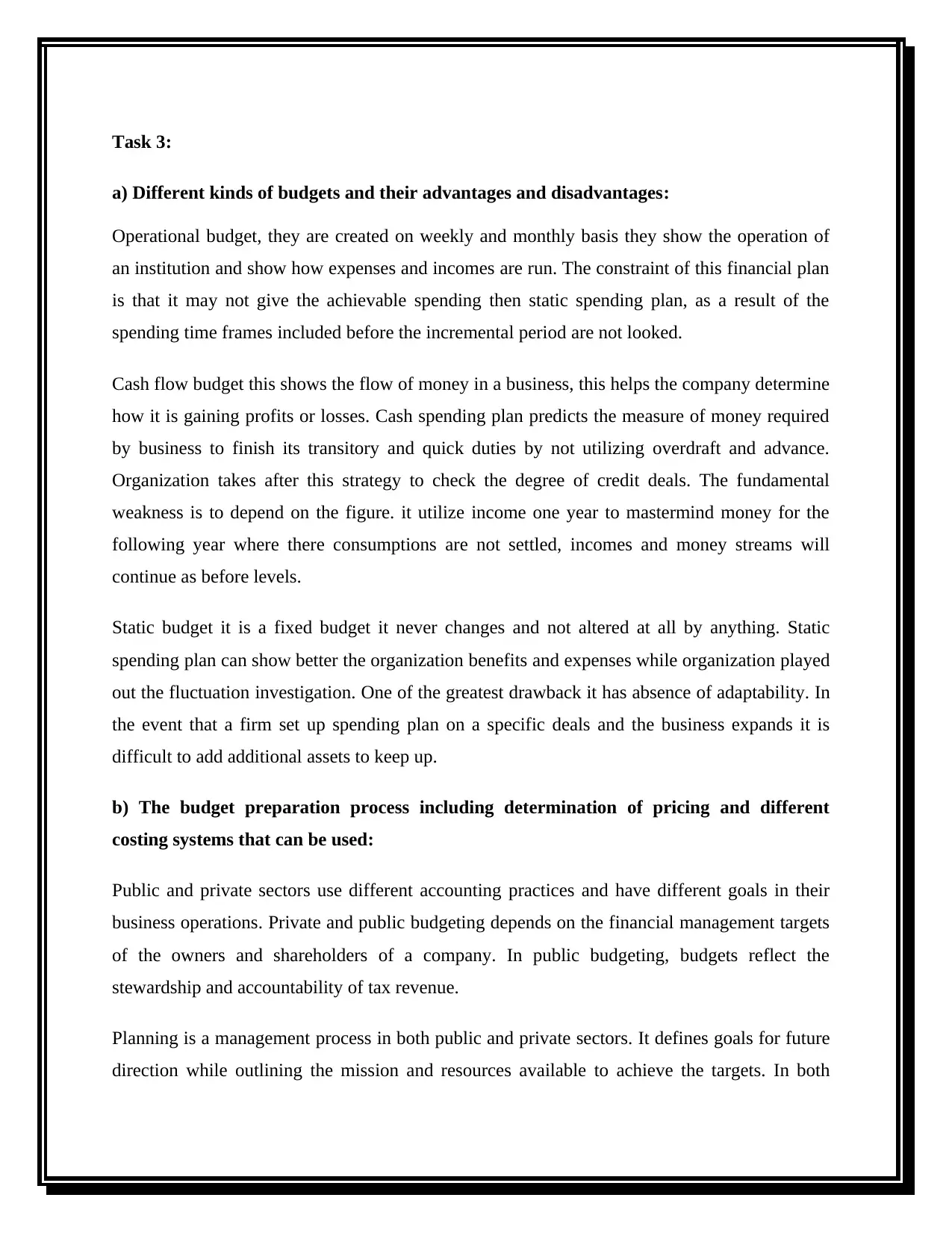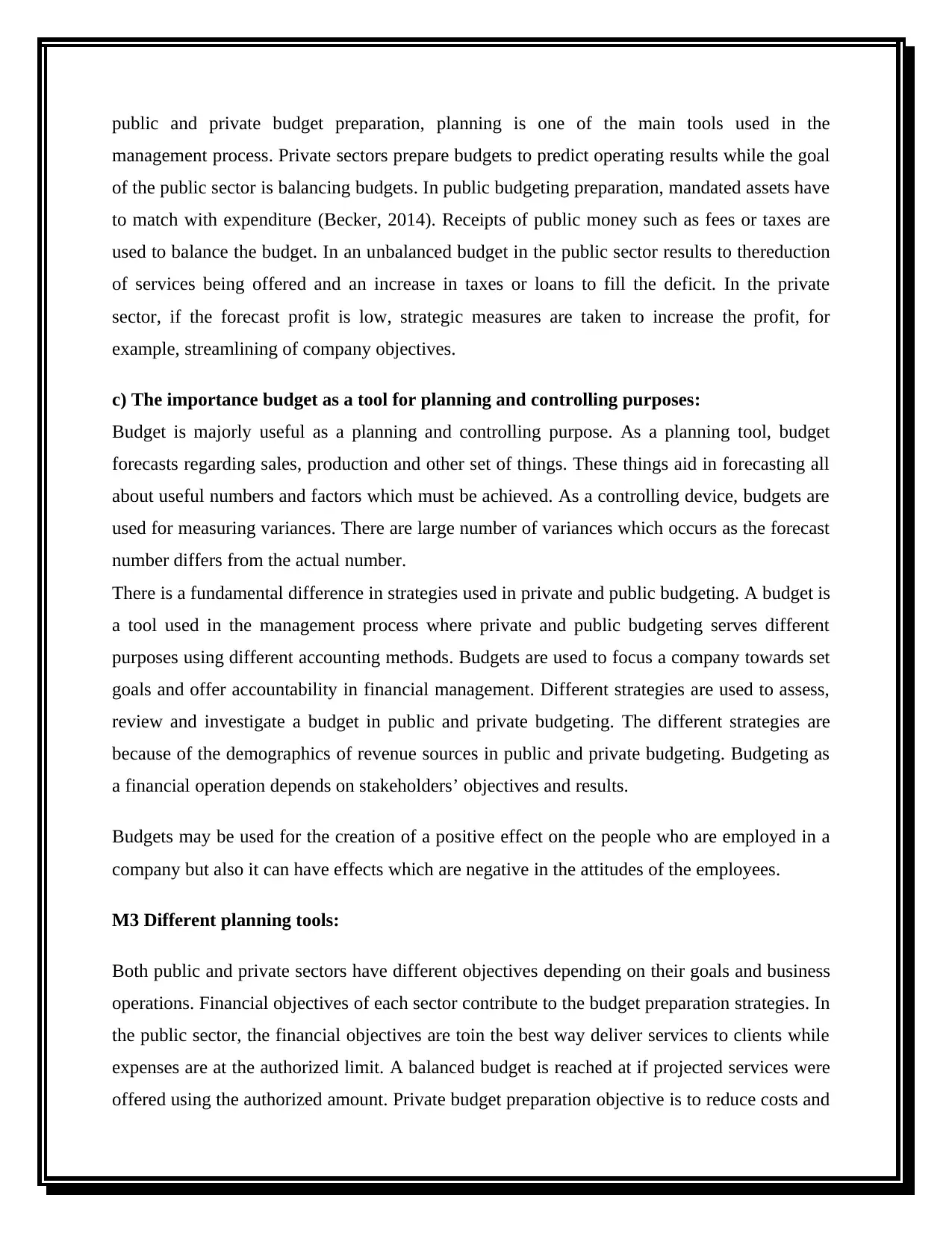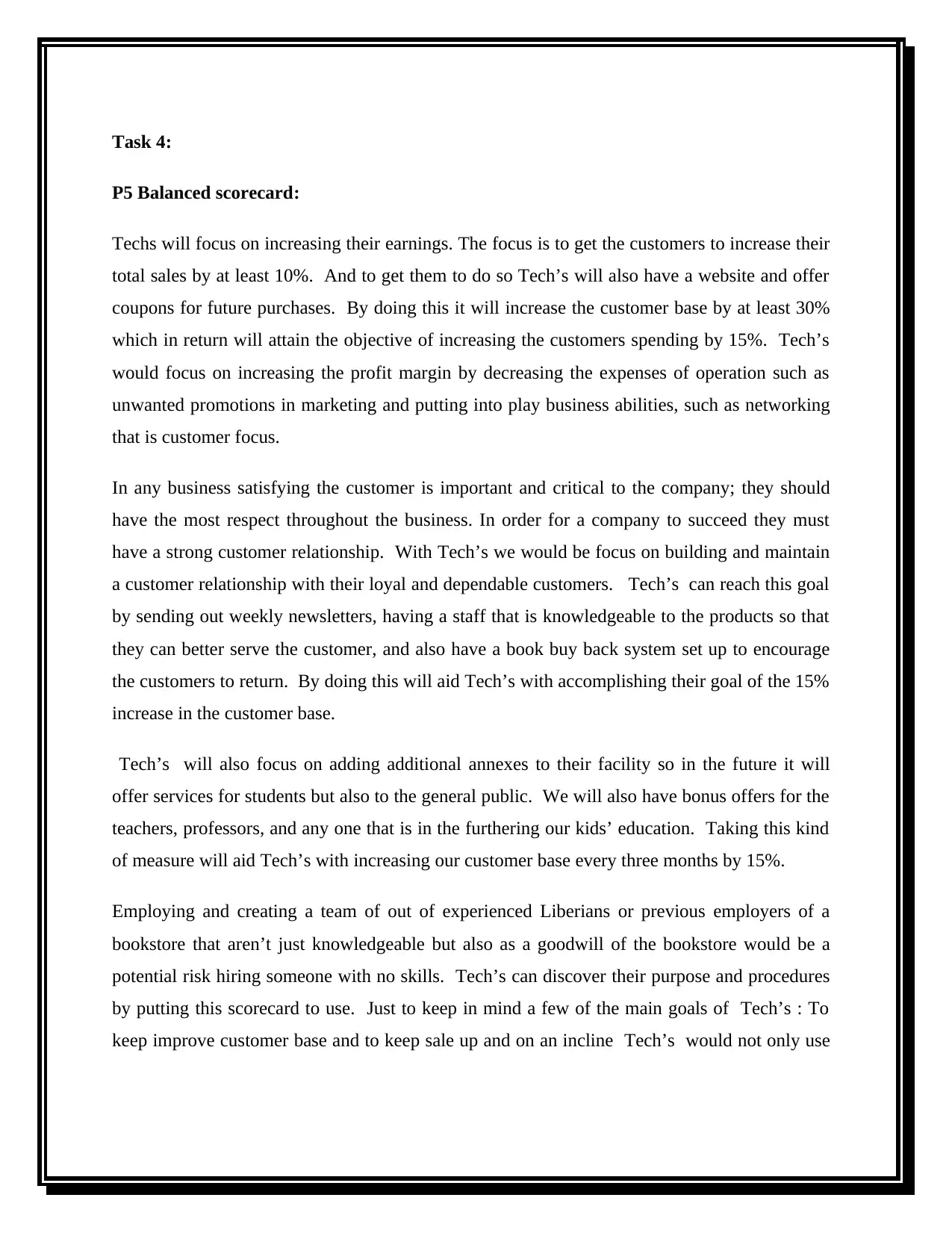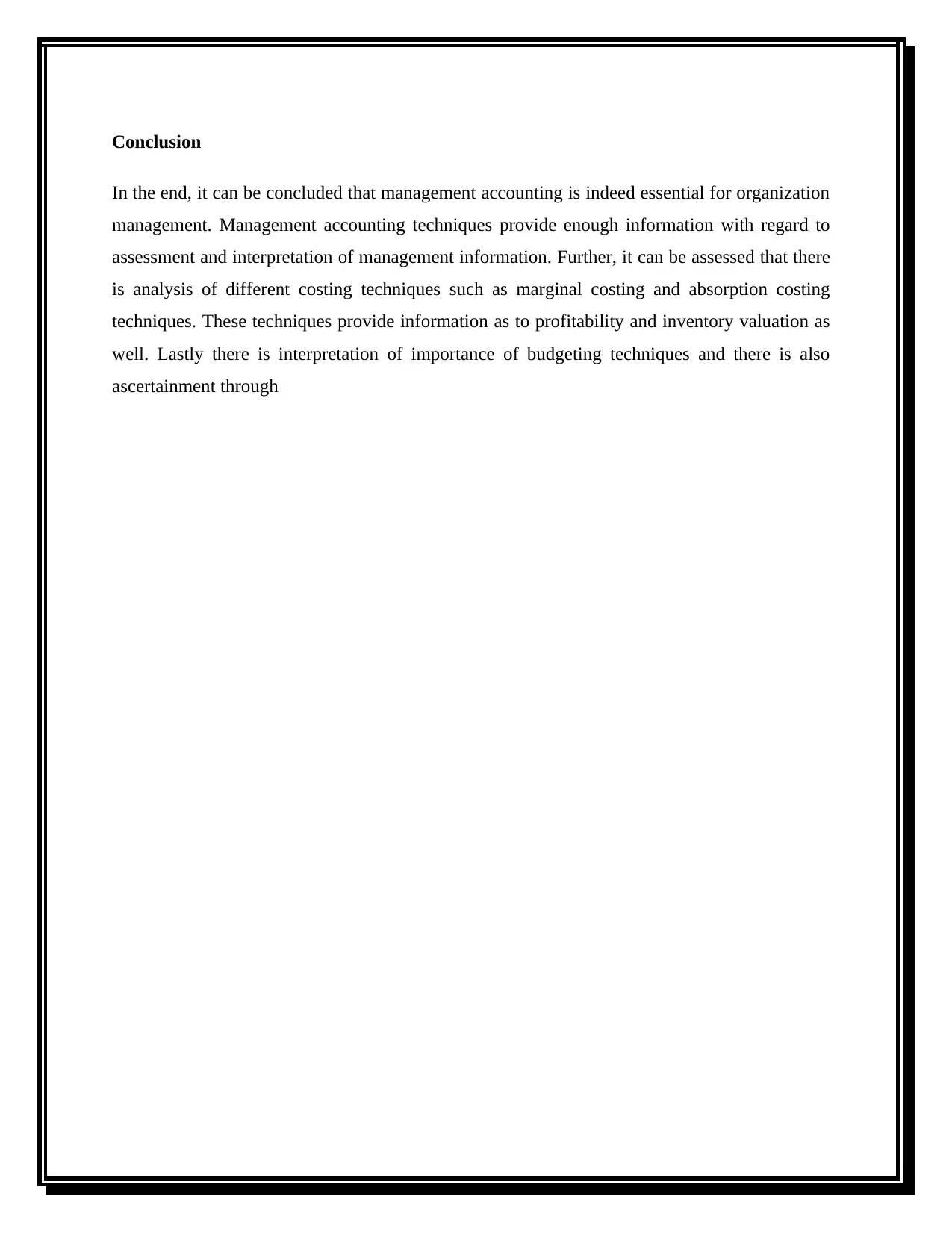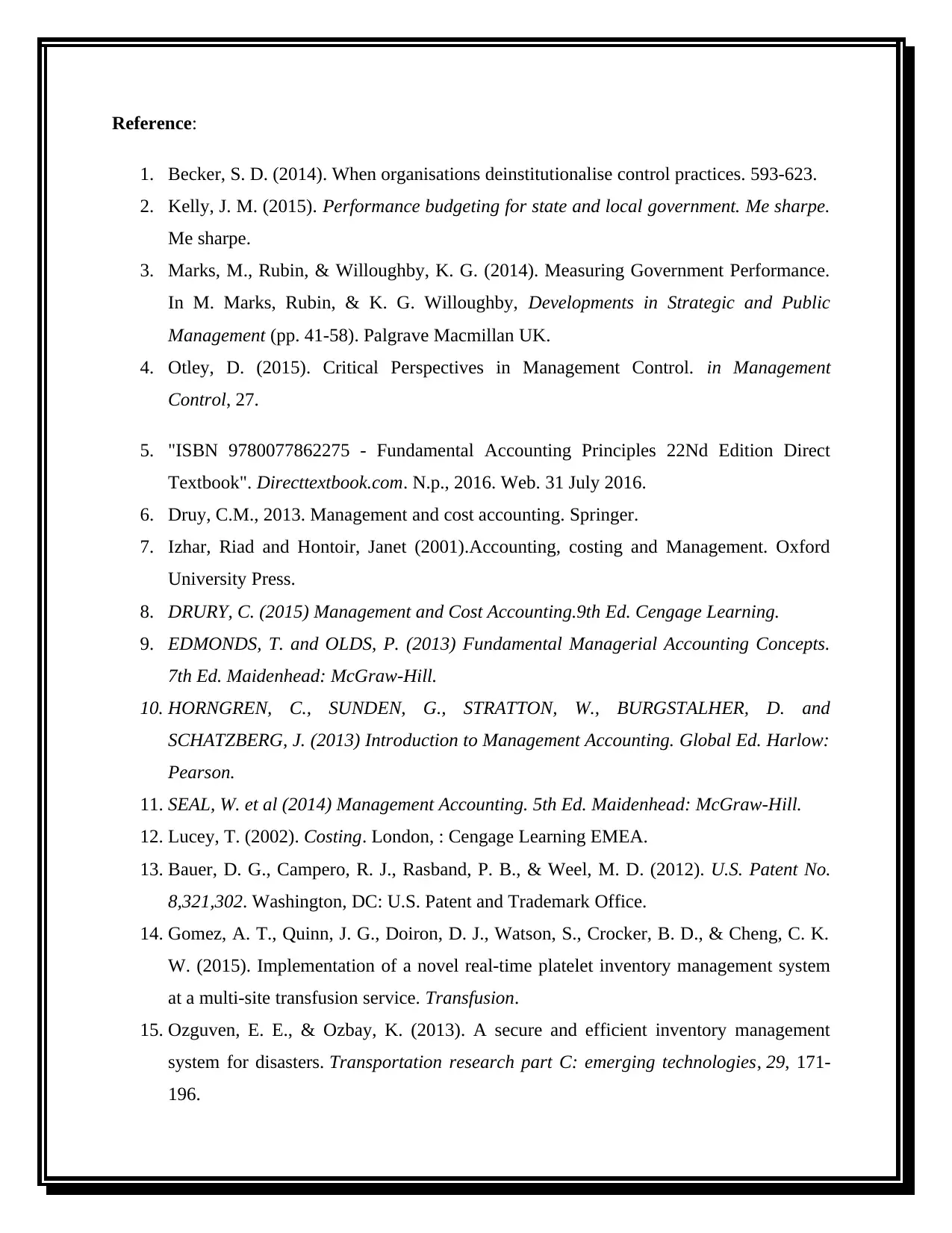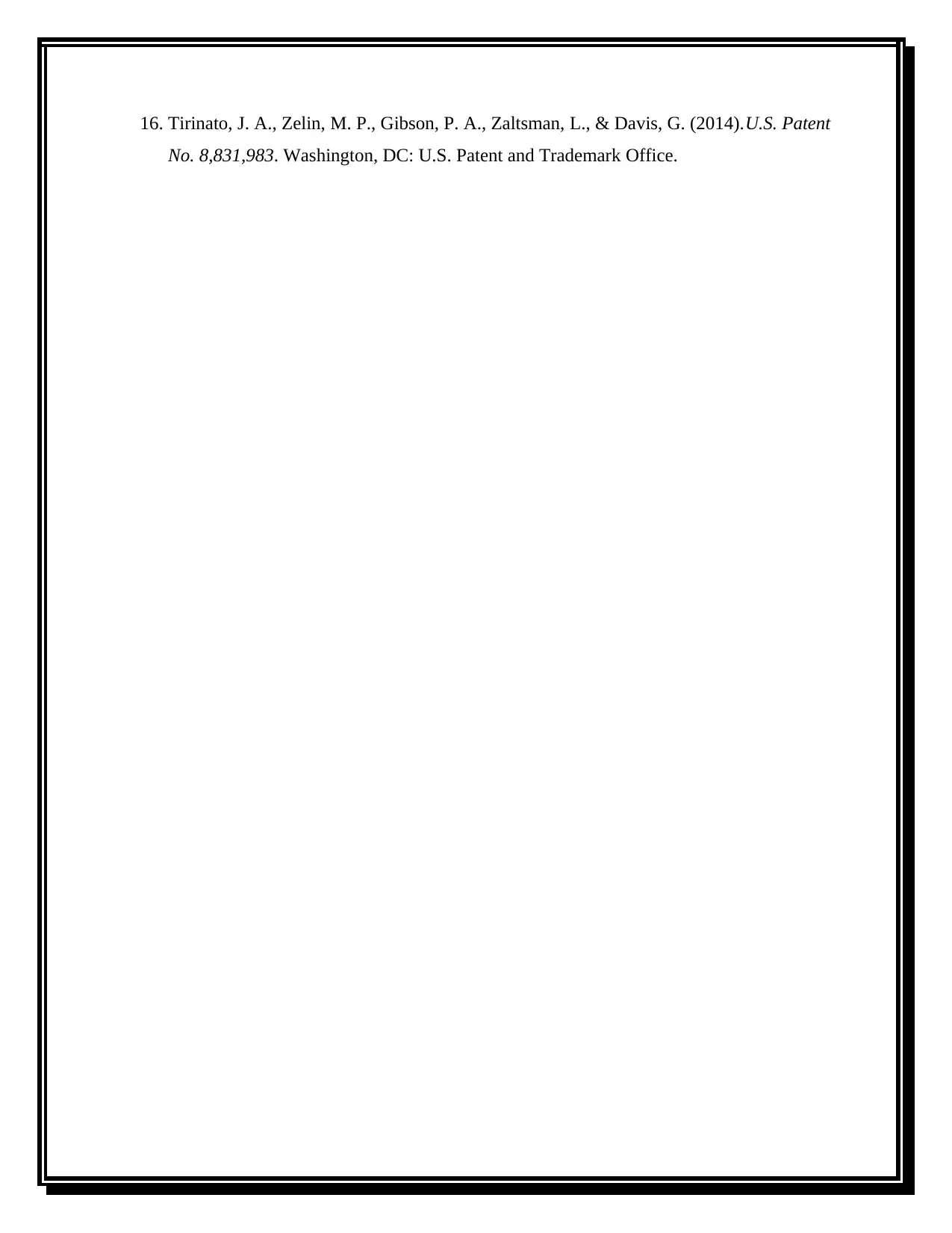This report provides a comprehensive analysis of management accounting principles and practices, focusing on the case of Tech (UK) Limited. It covers key concepts such as distinguishing management accounting from financial accounting, the importance of management accounting information for decision-making, different costing systems, inventory management, and job costing. The report also delves into the preparation of income statements using absorption and marginal costing methods, the various types of budgets and their advantages and disadvantages, the budget preparation process, and the importance of budgeting for planning and controlling purposes. Finally, the report examines the balanced scorecard as a strategic management tool and explores how management accounting can lead organizations to sustainable success.
![[object Object]](/_next/static/media/star-bottom.7253800d.svg)
![[object Object]](/_next/static/media/star-bottom.7253800d.svg)
